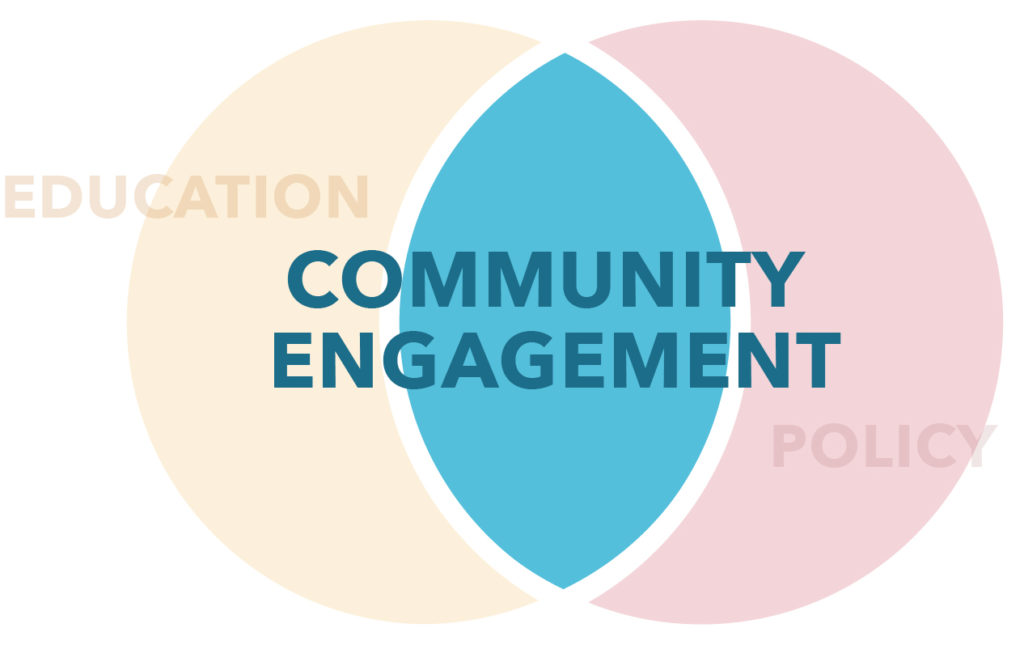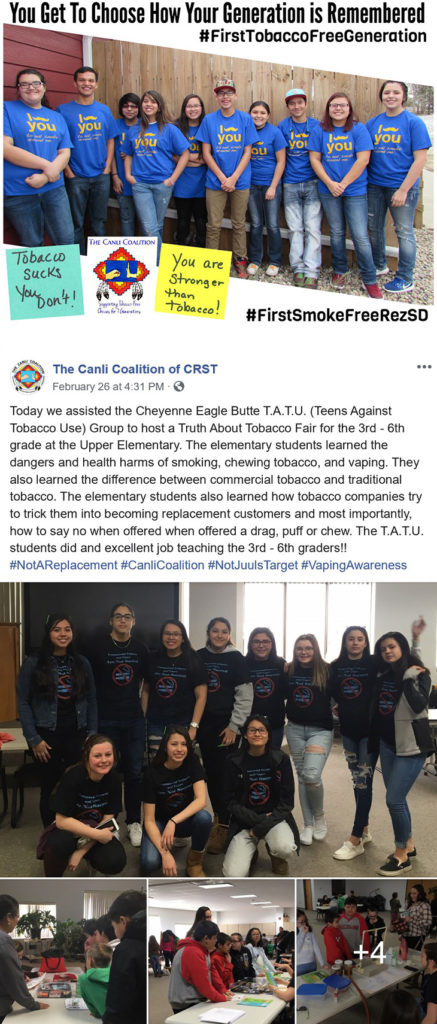In the 21st Century, social media has become a tool to engage and mobilize a community and can be a way for your coalition to spread your message and expand your network. There are many different platforms to choose from—Twitter, Facebook, Instagram or Snapchat, to name a few. Ultimately, your coalition should choose a platform or two that are easiest to manage and likely to reach the most people in your community.

Planning
- Choose a platform—if you’re not sure ask your volunteers (especially young adults) what is most commonly used in their community.
- Create an account, group, or page.
- Make your own URL if it’s an option (e.g. www.facebook.com/CanliCoalitionOfCRST).
- Complete the “about us” questions—a visitor should be able to figure out the coalition’s purpose in a few seconds.
- Create a “handle” so others can easily tag your coalition (e.g. @CanliCoalitionOfCRST).
- Post some original posts or photos and share some articles or videos that represent your coalition.
- Get followers—this can be done through social media invitations or by sharing to other groups in your community or groups with similar causes. Asking coalition members to invite their social media friends is a great way to grow followers for your cause.
- Add to your page’s story. Followers will see those on their page before a post.
- Develop posts that require discussions—the more activity you get on a post, the more it is seen by non-followers.
- Pictures or videos showing your group in action is a great way to get comments, likes, and shares. This all helps grow your following audience.
- Consider paying to promote or boost your post to an audience you select or to friends of friends.
- Keep posting at least a few times each week!
Resources
- The future of community mobilization: Evaluating community reactions to social media, PDF
- Social media templates, from Hootsuite
- Social Media Marketing 101, a guide to social media marketing
What if?
You don’t have experience with social media.
- Ask any millennial (someone who became a young adult in the 21st century) for help!
You don’t have time to make posts regularly.
- Many platforms allow you to pre-schedule multiple posts at a time.
Others post negative comments about your issue or coalition.
- Closely monitor anything that could be controversial. Generally, your followers will step up and come to your defense. If this happens, it’s okay to let the discussion take place. If this doesn’t happen or if the comment is inappropriate or offensive, remove it and block the individual from your page.
- The more interaction you get on your page the more your information will get out beyond your followers. Remember that if it is getting a lot of attention and people are discussing in comments, you will gain new followers. As long as it is a healthy discussion, it is a good way to spread the word.
Hints
- Use hashtags—this can help others find you, make it easier to keep track of your own posts, allow others to contribute to your message, and allow you to contribute to other’s messages (e.g. #FirstSmokeFreeRezSD, #NotJuulsTarget, #GreatAmericanSmokeOut)
- Consider doing a live social media feed for events, meetings, or other work you do. Čaŋlí Coalition Facebook Page: scroll through posts to see live videos of meetings.
Čaŋlí Coalition Example


To include cultural lifeways, we… post frequently about traditional teachings related to tobacco, and use Lakota language and images that are customized to our target audience, which is Native American people.